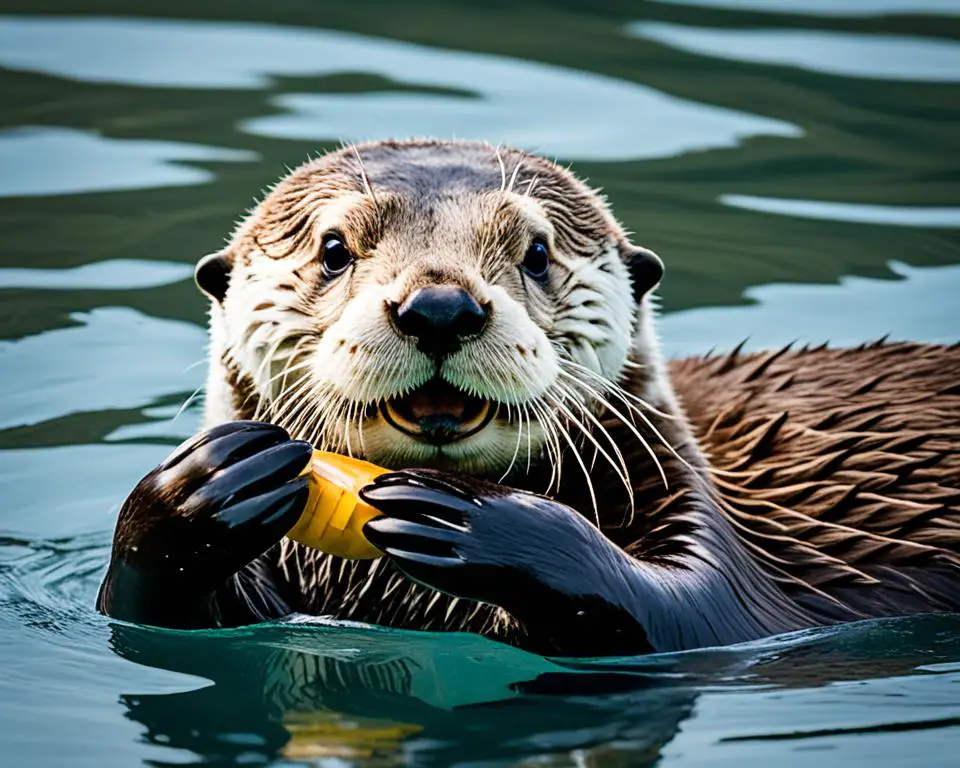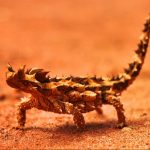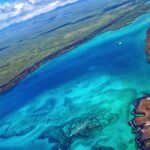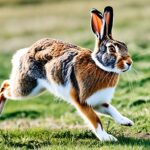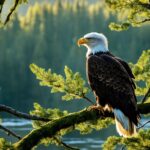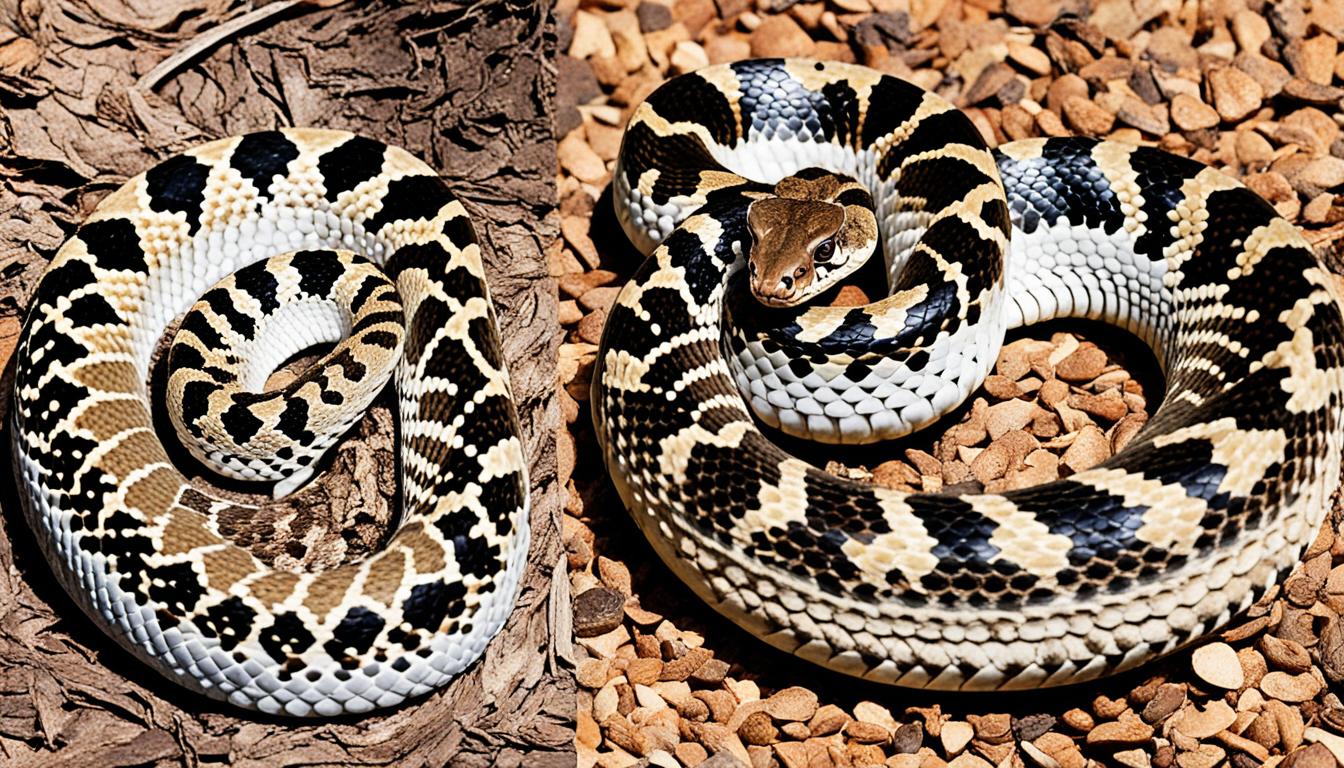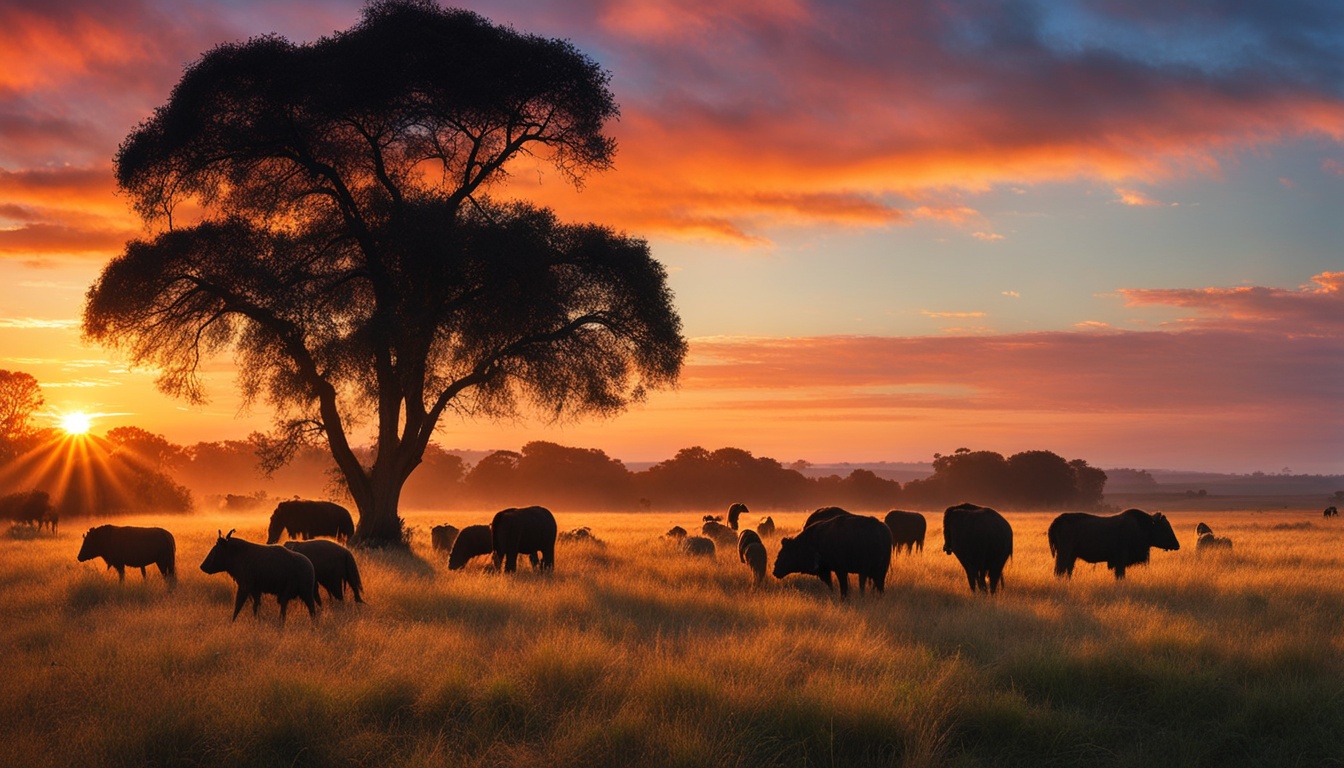Among the diverse tapestry of aquatic animals, sea otters capture hearts with their playful antics and expressive eyes, exemplifying the wonders of the North Pacific Ocean. These marine mammals are not merely a delight to observe; they are pivotal players in their nearshore ecosystems, maintaining the fragile balance of oceanic life. As Sea Otter Awareness Week approaches, let’s dive into the world of sea otters and explore their enthralling existence, from their charming behaviors to their crucial environmental roles.
Join us in a celebration of otter awareness, where every whisker twitch and furry frolic tells a story of adaptation and survival in the vast aquatic realm they call home. These enchanting sea otters, with their heartwarming presence, remind us of the intricate connections between all living creatures and the imperative to protect our shared North Pacific Ocean heritage.
Discovering Sea Otters’ Global Family
Exploring the remarkable world of otters unveils a rich tapestry of diversity within the Mustelidae family, a lineage of skilled carnivorous mammals adept at navigating a variety of habitats around the globe. As we delve deeper into the otter’s branch of this family tree, it becomes evident that the endearing sea otter is just one among many specialized relatives.
Sea Otters: One of Thirteen Otter Species
The sea otter emerges as a distinctive character among its kind, tipping the scales with a significant weight advantage over its freshwater kin, the North American river otter. In an illustrious roll call, we recognize thirteen different otter species, with habitats spanning across multiple continents and climates. Notably, the United States provides a safe haven for two such species, nurturing both the vibrant sea otter communities and their river-dwelling compatriots.
Meet the Mustelid Family: Otters, Skunks, and More
Sea otters claim the title of the largest member within the weasel family, standing out as remarkably skilled and intelligent marine mammals. Sharing the family crest with a myriad of other carnivores – skunks, weasels, wolverines, and badgers – each member of this family brings its own unique traits and behaviors to the ecological tableau. Despite its relative size dominance within the Mustelidae family, the sea otter maintains its status as the smallest marine mammal in North America.
| Characteristics | North American River Otter | Sea Otter |
|---|---|---|
| Weight | 10-30 pounds | 45-90 pounds |
| Family | Mustelidae | Mustelidae |
| Habitat | Rivers and Inland Waterways | Coastal and Marine Environments |
| Diet | Carnivorous: Fish and Invertebrates | Carnivorous: Sea Urchins, Crabs, Shellfish |
| Conservation Status | Least Concern | Endangered (in certain areas) |
The sea otter’s impressive lineage within the Mustelidae family not only highlights the complexity of their evolutionary journey but also underscores the significance of their role in marine ecosystems. Awareness and understanding of these carnivorous mammals lay the foundation for their conservation and the continued equilibrium of the aquatic realms they inhabit.
The Wide-Ranging Habitat of Sea Otters
Spanning from the pristine shores of coastal Alaska to the kelp-rich waters along California’s mainland, the sea otter habitat encompasses a diverse array of environments, each offering a unique glimpse into the life of these enchanting mammals. In Alaska, public lands play a crucial role in providing sanctuary for these creatures, with vast populations found in regions that are as wild as they are scenic.
Nestled within Alaska’s rugged landscapes, one finds the waters around Kodiak National Wildlife Refuge teeming with activity, as sea otters navigate the chilly currents. Similarly, Kenai Fjords National Park and Glacier Bay National Park stand as crucial conservation areas within the expansive sea otter habitat, enabling otters to thrive within the protected confines of their natural realm.
Contrasting the northern reaches, the southern sea otters claim the stretch of coastline from San Mateo County down to Santa Barbara County, including the remote San Nicolas Island, as their own. Here, amidst the warmer currents, they play, feed, and raise their young, benefiting from the conservation efforts that guard their peaceful existence.
The preservation of these sea otter habitats is paramount not only for the otters themselves but also for the health of marine ecosystems at large. Recognizing the importance of these areas, especially the fertile waters adjacent to public lands, is a critical step toward ensuring the survival and prosperity of sea otter populations for generations to come.
Protection Efforts for the Survival of Sea Otters
In the historical context of maritime wildlife conservation, the plight of sea otters has garnered considerable attention, leading to pivotal sea otter protection initiatives. Thwarted by the perilous fur trade, these endearing mammals once faced the grim shadow of extinction. Today, we stand witness to a legacy of conservation laws and treaties that emerged to rescue and rehabilitate the endangered species. For these expressive and vital creatures, a multifaceted approach to preservation has proven indispensable.
The International Fur Seal Treaty of 1911
At the helm of the sea otters’ guardianship was the International Fur Seal Treaty, a landmark agreement established in 1911. This treaty, an international commitment, marked a turning point for marine conservation efforts, becoming the very bedrock upon which future conservation laws were constructed. Enacted at a time when the need for urgent action was clear, the treaty showcased global resolve for the safeguarding of sea otters from relentless hunting.
Marine Mammal Protection Act and The Endangered Species Act
The torch of preservation, first lit by the International Fur Seal Treaty, was further carried into the modern era with the enactment of two pivotal pieces of legislation—the Marine Mammal Protection Act and the Endangered Species Act in the 1970s. In the United States, these comprehensive statutes provide robust legal framework, reigniting hope for the sea otter protection through stringent regulatory measures and enhanced rehabilitation programs. Implementing stringent oversight, these acts ensure that the once-dwindling populations of sea otters receive the protection necessary to forge ahead into a more secure future.
Together, these protective mandates form an arsenal of defenses against the hazards faced by sea otters. The synergetic effect of these historical and contemporary conservation initiatives is a testament to the difference humanity can make for the survival and flourishing of endangered species worldwide, affirming the crucial role each of us plays in upholding the integrity of Earth’s marine legacy.
The Remarkable Appetite of Sea Otters
The sea otter diet is a testament to their capacity to sustain a high metabolism, with these furry marine inhabitants consuming up to 25 percent of their body weight in food every single day. This voracious appetite is vital to maintaining their energy levels in the cold ocean waters they call home. Sea otters engage in rigorous foraging behavior, seeking out a variety of marine food sources to satisfy their nutritional needs.
From the shallow coastal waters, sea otters have perfected the art of prying loose and scooping up delectable seafood. Clams, mussels, crabs, and sea urchins form the crux of their diet. It’s not just about what they eat, but how they eat that captures the imagination. Using rocks as tools to crack open the tough exteriors of shellfish signifies a remarkable level of animal intelligence and dexterity. While floating on their backs, they exhibit exceptional foraging behavior, often creating quite the spectacle for onlookers as they dine on their freshly unlocked treasures.
Sea otters’ incredible daily caloric intake and digestive efficiency are what underpin their ability to keep warm in chilly marine environments. This high-energy diet is crucial, given their lack of blubber – a trait common among other marine mammals.
Understanding the sea otter’s eating habits offers insights into their ecological importance, as each aspect of their foraging behavior plays a crucial role in maintaining the balance of nearshore ecosystems. Their choices in prey can significantly impact the population dynamics of other species and subsequently the health of kelp forests and the broader marine community.
- Shellfish Consumption: Essential for their growth and a primary source of sustenance.
- Tool Use: Indicative of their high level of cognitive function.
- Impact on Ecosystem: Sea otters help control sea urchin populations, promoting kelp forest resilience.
In sum, the sea otter diet is not only fascinating in its diversity but serves as a cornerstone of their survival strategy. As efficient predators with a preference for certain marine food sources, sea otters are integral to their environment – a fact underscored by their relentless foraging behavior and the high metabolic demands of their oceanic lifestyle.
Sea Otters’ Luxuriant and Dense Fur Coat
Renowned for boasting the densest fur among all animals, the sea otter’s pelage is a marvel of evolution setting a record with up to one million hair follicles per square inch. This extraordinary coat serves as the primary defense against the frigid waters of their marine habitat. In the absence of blubber, sea otter fur is crucial for maintaining their bodily warmth, showcasing a sophisticated natural solution for thermal insulation.
In place of the blubbery layer commonly found in their marine mammal counterparts, sea otters possess a fur that is intricately designed to provide warmth. This thick, luscious fur is an exceptional adaptation that enables them to thrive in their aquatic environment.
How Sea Otters Stay Warm Without Blubber
Sea otters’ survival in the cold oceanic waters is intricately linked to their meticulous grooming habits. Through continuous grooming, sea otters are able to maintain the impeccable condition of their fur, which traps a layer of air against their skin. This air layer provides significant thermal insulation, effectively acting as a natural wet suit and keeping the otters warm in the water.
The Importance of Grooming for Insulation
Sea otters engage in elaborate grooming rituals that entail the cleaning and fluffing of their fur to ensure maximum insulation. These grooming habits not only align the fur to create the necessary air barrier but also help in repelling water, further preserving the insulative quality. A significant portion of their day is dedicated to this process, reflecting the critical nature of grooming for their survival.
Such grooming is not a mere pastime but a crucial routine, so pivotal that a sea otter’s life may very well depend on it. It’s a meticulous process that sustains their exquisite sea otter fur and, by extension, their overall well-being. The dual purpose of maintaining a sleek appearance and vital warmth exemplifies the extraordinary nature of sea otter adaptations.
Sea Otter Reproduction: A Year-Round Affair
The intriguing reproduction cycle of sea otters is an essential aspect of their life, with southern sea otters capable of breeding at any time of the year. In contrast, their northern counterparts prefer the spring months for giving birth. The growth and survival of sea otter pups heavily depend on the maternal care they receive, making the reproductive habits of these marine creatures a subject of significant ecological importance.
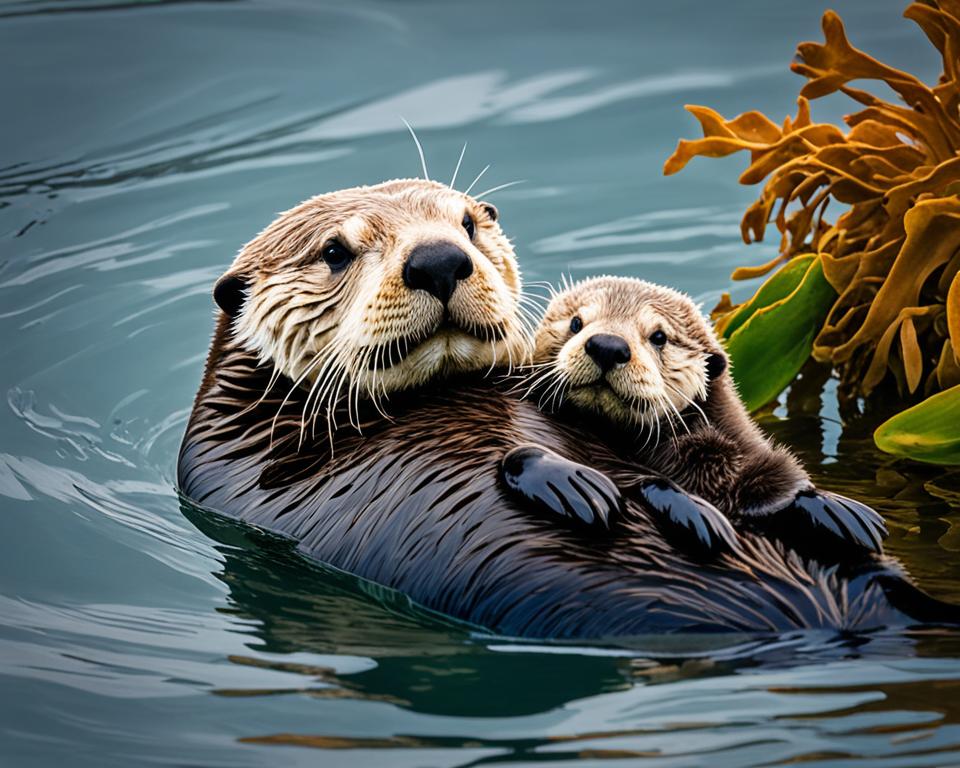
Mother and Pup Bonding
The bonding process between a sea otter mother and her offspring is one of nature’s most endearing displays of maternal care. This essential bonding not only fosters a nurturing environment for the animal offspring but also secures the necessary transmission of vital survival skills. During the critical first six months, a sea otter pup remains by its mother’s side, learning through observation and direct interaction.
Pup Development and Survival Skills
During its formative period, a sea otter pup will develop the crucial abilities needed to navigate its aquatic environment. Interestingly, a pup’s fur is so densely packed that it naturally floats, a trait that prevents it from diving but simultaneously offers protection while the mother forages for food. Only when the pup’s adult fur comes in does it gain the ability to submerge and become a proficient diver, a key milestone in its development cycle.
As animal offspring, sea otter pups represent a significant investment of resources for the mother. The energy-intensive demands of raising a pup—teaching foraging techniques, grooming for warmth, and developing social contacts within the otter community—are just some of the critical elements of motherhood in the sea otter world. It is through these dedicated maternal efforts that the knowledge and skills necessary for survival are lovingly passed down to the next generation of these captivating marine mammals.
The Impressive Diving Abilities of Sea Otters
Sea otters are not only enchanting creatures with playful behaviors but also possess remarkable sea otter diving capacities. These marine mammals have evolved to excel when searching for food beneath the waves, performing feats that captivate and intrigue scientists and wildlife enthusiasts alike.
Lung Capacity and Breath Control Underwater
The key to the sea otters’ impressive dive performance lies in their extraordinary lung capacity, which is 2.5 times greater than that of similar-sized land mammals. This adaptation allows them to plunge to ocean depths and stay submerged for over five minutes on a single breath. Their river otter relatives can hold their breath even longer, managing to stay underwater for up to eight minutes, which highlights their advanced adaptations for an aquatic lifestyle.
Foraging Techniques and Sensory Adaptations
While engaged in underwater foraging, sea otters leverage their tactile senses, utilizing sensory whiskers to detect the slightest movements of prey hidden in the sea’s crevices. Alongside their sensitive whiskers, they rely on strong forepaws, well adapted to dig for clams and other shelled creatures nestled in the ocean floor. This combination of physical and sensory adaptations ensures that sea otters are formidable hunters, adept at unearthing their next meal from among the ocean’s hidden pantries.
Understanding the unique capabilities of sea otters enriches our appreciation for the delicate balance of marine ecosystems and the remarkable adaptations of its inhabitants. From their impressive lung capacity to their dexterous underwater foraging, sea otters continue to be an object of fascination and a testament to nature’s ingenuity.
Sea Otters’ Role as a Keystone Species in Marine Ecosystems
The role of sea otters as a keystone species illustrates their substantial impact on marine life diversity and ecosystem functions. Acting much like a linchpin within their habitats, they exert influence far beyond their immediate presence, particularly within kelp forests and sea urchin populations.
By predating on sea urchins, sea otters keep these herbivores’ populations in check, which is paramount for the health and vitality of kelp forests. These underwater forests provide crucial shelter and nutrients to an array of marine species, underscoring the importance of sea otters in fostering a diverse and thriving marine ecosystem.
Impact on Sea Urchin Populations and Kelp Forests
In areas like Alaska’s Glacier Bay National Park, the presence of sea otters has revitalized ecological diversity and restored balance. This shows a clear relationship between sea otter activity and ecosystem health—particularly in their control of sea urchin numbers. By keeping these kelp grazers within sustainable levels, sea otters allow kelp forests to flourish. This has far-reaching effects on marine life diversity and the preservation of ocean habitats.
Additional benefits extend to the carbon sequestration abilities of kelp forests, which in turn contribute to climate regulation. The interconnectedness of sea otters with these critical ecosystem functions can’t be overstated—they are pivotal in maintaining the resilience and productivity of coastal environments.
Ocean Conservation and Biodiversity
The influence that sea otters have on conservation efforts is remarkable. As ambassadors of ocean health, their survival and proliferation signal a thriving, balanced marine ecosystem. When we protect and support sea otters, we are, in fact, fostering the entire spectrum of marine life, enhancing seagrass beds, and supporting the overall biodiversity of our oceans.
Conservation measures that have enabled sea otter populations to expand have also indicated positive trends in marine life diversity. The repopulation of sea otters directly correlates with the health of marine ecosystems, making their conservation a priority for maintaining the natural richness of our waters.
The Unique Use of Tools by Sea Otters
Sea otters exhibit a fascinating dimension of animal intelligence through their tool use, a trait that places them amongst a select group of mammals with this capacity. Observations of otter behavior reveal their proficiency in selecting and employing rocks as tools—a skill set critical to their survival. This ingenuity is particularly evident in their marine foraging techniques, which often involve the use of rocks to access the nutrient-rich meat within hard-shelled prey.
Not only do these marine mammals display such intelligent tool use, but they also exhibit foresight and planning in storing these instruments. Beneath their arms, sea otters possess loose skin patches that double as pockets, where they securely tuck away their favored rocks and collected food. This adaptation signifies a sophisticated level of cognitive function, further highlighting the intricate otter behavior that contributes to their foraging success.
Otters’ methodical use of rocks to crack open shellfish exemplifies the adaptability and problem-solving abilities synonymous with advanced animal intelligence.
- Storage of Tools: Loose skin pockets serve as safekeeping for their foraging tools.
- Ingenious Foraging: Using rocks as hammers showcases otters’ intelligent approach to accessing food.
- Behaviors Observed: These behaviors underline the complexities of otter life and their interactions with the marine world.
Through witnessed otter behavior and the artifacts of their marine foraging techniques, we gain insights into the fascinating world of sea otters. Their application of tool use not only sets them apart within the animal kingdom but also serves as a reminder of the nuanced intelligence that exists within our oceans’ depths.
The Social Behavior and Resting Habits of Sea Otters
Curious and sociable by nature, sea otters exhibit intricate social behavior relevant to their daily survival and interaction within their marine environment. Their communal resting periods reveal profound insights into sea otter social behavior.
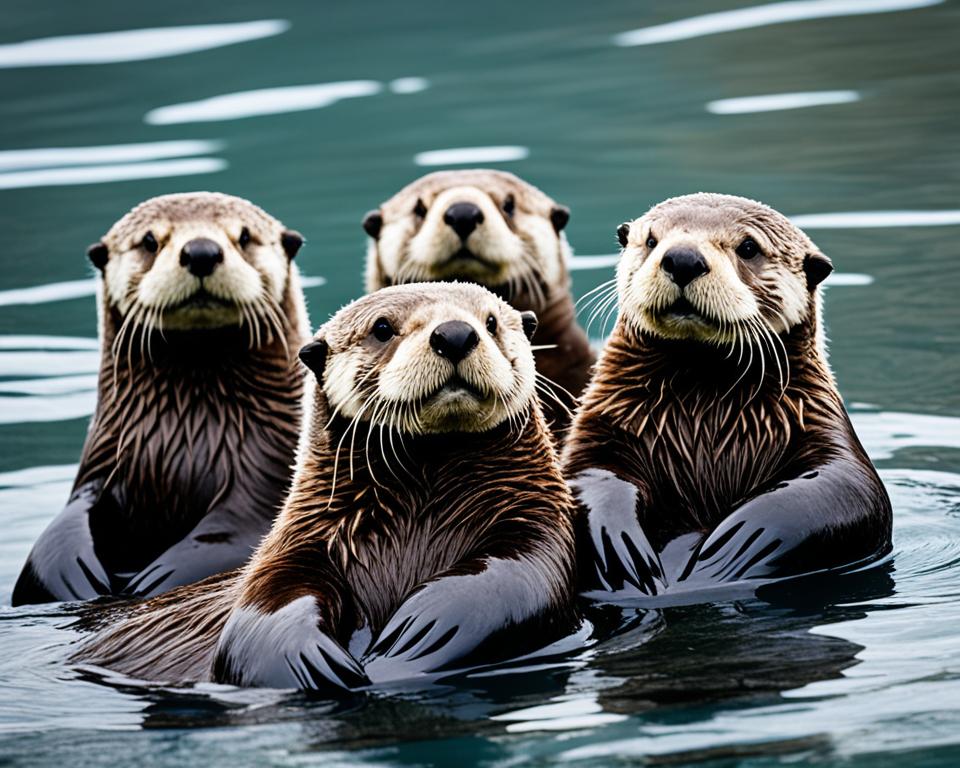
Understanding the habitual formations of otter rafts is essential to appreciate how these marine mammals leverage animal group behavior to navigate their world. Below, we explore the collective and communicative nuances that define the sea otter lifestyle.
Understanding the Formation of Otter Rafts
One of the most endearing sights along the coastlines where otters reside is the phenomenon of otter rafts. These floating assemblages serve as prime examples of animal group behavior, as sea otters join forces to rest and protect each other from the perils of predators and strong currents. The formation of these rafts, often constituting a large number of individuals, is a tactical move that highlights the interconnectedness of marine mammal interaction.
Communication and Interaction Among Otters
The bonds formed within these groups are strengthened by continual marine mammal interaction, as they communicate through a variety of vocalizations and body language. Whether through casual contact such as touching whiskers or more purposeful actions like wrapping up in kelp or holding paws, they convey a sense of unity and security. This seamless blend of individual and collective existence emphasizes the complex nature of sea otter social behavior.
- Linking Paws: To ensure group cohesion and mutual aid, sea otters may interlock paws with one another.
- Seaweed Wrapping: Utilization of seaweed as a natural anchor to prevent straying showcases their resourcefulness.
- Group Vigilance: Large rafts increase alertness and decrease vulnerability to predation.
These behaviors encapsulate the essence of mutual coexistence among sea otters and the fundamental aspects of sea otter social behavior. It’s a fine balance of kinship and individuality that enables these charismatic creatures to thrive within vast and unpredictable marine territories.
Sea Otters – Adorable but Formidable Animals
Cherished for their enchanting behavior and signature cuteness, wild sea otters are often the subjects of wildlife viewing affection. However, behind their photogenic façade lies a reminder that these marine mammals are equipped for survival in their rugged habitats. Understanding the dual nature of sea otters is essential for anyone interested in observing these creatures in their natural environment.
Recognizing Sea Otters’ Wild Nature
Despite their seemingly cuddly and approachable appearance, sea otters are indeed equipped with strong teeth and capable of a powerful bite. These adaptations serve them well in their diet of hard-shelled marine life but must also be a warning to the well-meaning observer. For both animal safety and to respect the otters’ daily routines, a responsible approach to viewing these mammals is crucial.
Appropriate Viewing Etiquette for Observers
Maintaining a safe and respectful distance is paramount while enjoying the sight of sea otters in their wild habitat. Maritime guidelines advise keeping a distance of approximately 60 feet or more—equivalent to about 5 kayak lengths—when observing these animals. This precaution not only ensures the safety of wildlife enthusiasts but also safeguards the well-being of the sea otters themselves, preventing any undue stress or interference in their natural behaviors.
When engaging in wildlife viewing, it is essential to prioritize non-intrusive practices. By doing so, viewers contribute to the ongoing efforts to conserve marine mammals and their habitats. Whether through binoculars or a camera lens, capturing the beauty of sea otters from a distance embodies a deep respect for our planet’s natural wonders. This ethical approach not only enriches the viewing experience but also exemplifies a commitment to preserving the delicate balance of our marine ecosystems.
In the grand panorama of ocean life, embedding principles of respect and awareness is the cornerstone of a sustainable relationship between humans and aquatic species. As advocates for ocean protection, responsible viewers become custodians of the serene coexistence between humanity and the vibrant world of marine mammals. So, while you may be enchanted by the charming antics of wild sea otters, remember that the most significant gesture of admiration is to admire them from afar, ensuring their safety and yours.
The Diverse Diet Preferences of Sea Otters
Amid the ebb and flow of their coastal habitats, sea otters demonstrate a diverse and selective sea otter diet. Their culinary preference for shellfish is not only a delight to witness but also an essential aspect of marine nutrition. This diet plays a critical role in their survival, fueling the unique foraging behaviors that characterize these marine mammals.
Shellfish: A Sea Otter’s Favorite Delicacy
Sea otters often indulge in various shellfish species, including clams, sea urchins, and mussels. These critters require a specialized approach to extract their nourishment—a task that sea otters accomplish with remarkable efficiency and skill. Their robust teeth, akin to nature’s can openers, are adept at cracking even the toughest shells, revealing the succulent morsels inside.
Nutritional Needs and Foraging Skills
The high metabolic rate of sea otters necessitates a diet rich in calories, and the shellfish they consume are packed with the energy necessary to sustain their daily activities. Sea otters are masters of adaptation, honing their foraging behaviors to suit the availability of marine nutrition in their environment. From the cracking of a shell to the deft handling of prey, the sea otter’s diet is a spectacle of nature’s ingenuity.
By exploring the depths of their coastal realms, sea otters uncover a buffet of oceanic delights, securing their place as both predator and protector of the marine nutrition cycle. To understand the full impact of their dietary choices, let’s delve into a tabulated snapshot of their favorite shellfish options:
| Shellfish Type | Common Habitat | Nutritional Value | Note on Foraging Behavior |
|---|---|---|---|
| Clams | Sandy or muddy sea floors | Rich in protein and minerals | Otters use rocks to shuck open the hard shells |
| Sea Urchins | Kelp forests and rocky areas | High in essential fatty acids | Otters play a role in controlling urchin populations |
| Mussels | Intertidal zones attached to rocks | Contain omega-3 fatty acids | Otters are known to meticulously pry open the shells |
The sea otter diet is as intricate as it is interesting. This dietary diversity not only fulfills their marine nutrition requirements but also stabilizes the marine ecosystems they inhabit. Through their selective feeding and specialized foraging behaviors, sea otters maintain the delicate balance necessary for a thriving oceanic community.
Photogenic Sea Otters: A Love Affair with the Camera
When it comes to aquatic wildlife, few creatures can charm a camera’s lens quite like the enchanting sea otter. With their endearing expressions and playful nuances, they naturally attract the attention of sea otter photography aficionados everywhere. These marine mammals are particularly photogenic, providing captivating otter pictures that resonate with audiences worldwide. From the serene waters of the Monterey Bay National Marine Sanctuary to secluded inlets along the coast, sea otters have a way of capturing the joy and beauty of the ocean.
Engaging in sea otter photography isn’t just about the technicality of capturing an image; it’s about revealing the soul of the waters they inhabit. Their intriguing behaviors, from cracking open shellfish to floating effortlessly on the water’s surface, provide endless opportunities for vibrant otter pictures. It’s no wonder that their habitat, especially the Monterey Bay National Marine Sanctuary, is a haven for photographers seeking to showcase the charisma and elegance of these aquatic wildlife stars.
Whether nestled within a raft of their peers or performing a solo backstroke across the bay, the sea otter’s unrivaled ability to engage with the camera is a photographer’s delight.
The positive impact of these momentary glimpses into the lives of sea otters goes beyond aesthetics. It plays a crucial role in raising awareness about the importance of preserving their delicate ecosystems. Every image shared amplifies the message about the critical need to protect and conserve our oceanic treasures. Thus, sea otter photography isn’t simply about crafting the perfect shot; it’s a form of advocacy for aquatic wildlife protection, particularly within the pristine refuge of the Monterey Bay National Marine Sanctuary.
In the mission to document these fascinating creatures, photographers are both witnesses and storytellers. Through their lenses, the playful antics and tender moments of sea otters inundate social media feeds and photography exhibits, compelling viewers to take a step closer to the marine world. As we shine a light on the beauty and significance of sea otters, may every captured image inspire a collective commitment to their preservation, echoing from the shores of California to the corners of the globe.
Conclusion
As we surface from the depths of our journey through the captivating world of sea otters, Sea Otter Awareness Week presents a timely opportunity to reflect on the ripple effects of these charismatic creatures within marine ecosystems. Their significance extends far beyond their adorable demeanor to play pivotal roles in environmental stewardship and aquatic wildlife conservation. It’s a perennial invitation to the public and experts alike to advocate for the protection and appreciation of sea otters—a quest that reverberates through the currents of ocean protection.
The conscientious efforts in marine ecosystems conservation and the strides in scientific understanding we’ve celebrated are beacons of hope for these marine treasures. Unearthing the remarkable behaviors of sea otters, from their tool use to social bonding in rafts, illuminates the rich tapestry of life that thrives beneath the waves. However, it falls upon us to uphold this enlightenment, fostering a legacy of ocean protection that carefully balances human interests with the needs of our aquatic allies.
Sea Otter Awareness Week is more than a mere observation; it’s a clarion call for ongoing dedication to aquatic wildlife conservation. As stewards of the natural world, our actions today shape the future of sea otters and the intricate marine ecosystems they inhabit. Let us stride forward with a steadfast commitment to educate, conserve, and celebrate, ensuring that sea otters continue to enchant and inspire awe in the oceans’ ballet of life.

